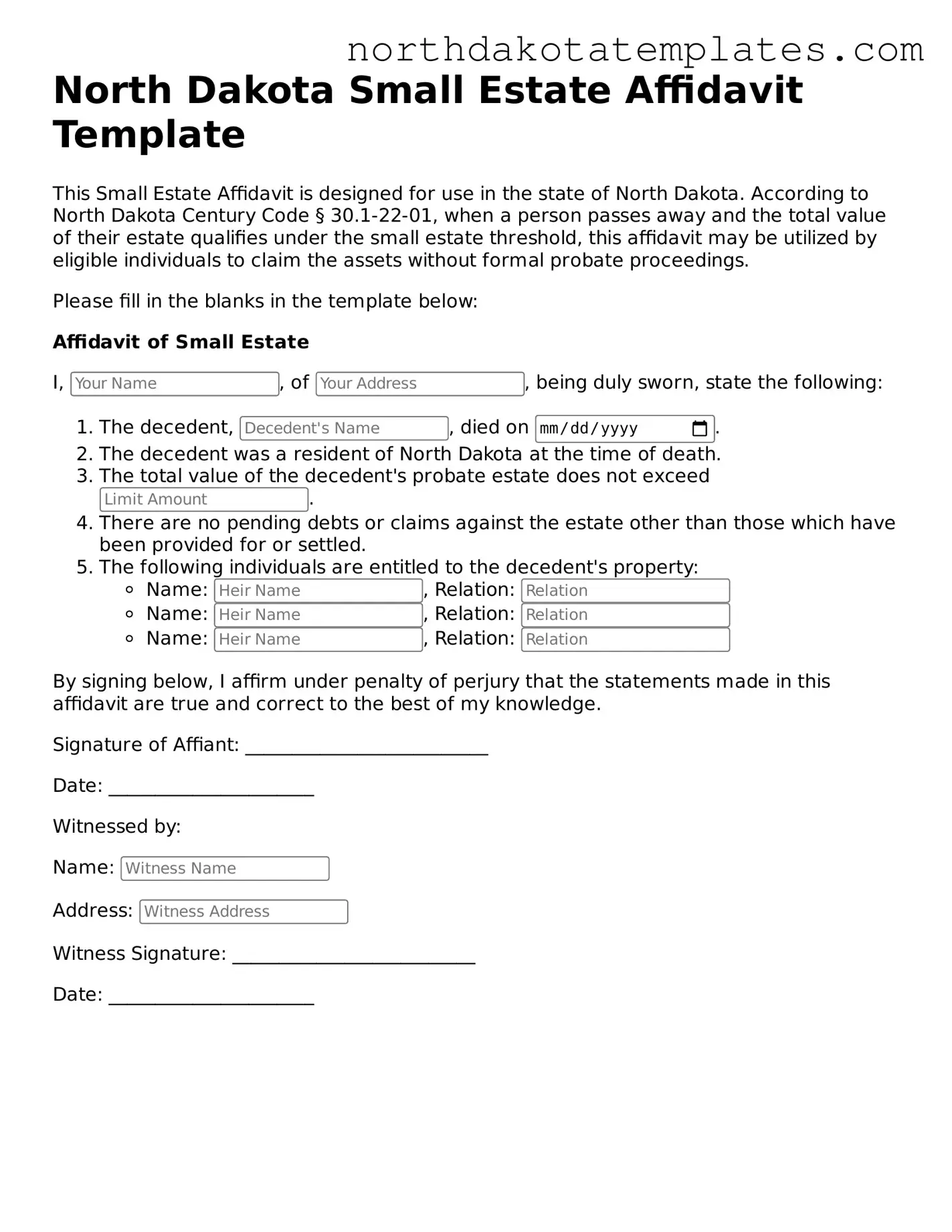Blank North Dakota Small Estate Affidavit Template
The North Dakota Small Estate Affidavit form is a legal document that allows individuals to settle a deceased person's estate without going through the lengthy probate process, provided the estate meets certain criteria. This form simplifies the transfer of assets, making it easier for heirs to claim what they are entitled to. If you believe you may need to fill out this form, click the button below to get started.
Access Document
